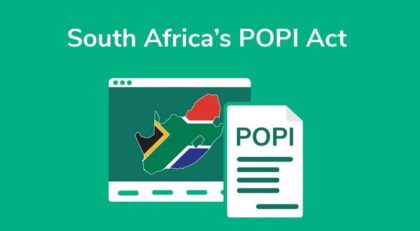How and Where To Get a Quick Loan in South Africa
 We are living in troubling times. The Covid-19 pandemic has wiped out wealth for many people, and put a stop on income for many more.
We are living in troubling times. The Covid-19 pandemic has wiped out wealth for many people, and put a stop on income for many more.
These are the hard times we are always told to save for. The so called ‘rainy days’.
If you are one of those who has found themselves in this predicament, you may be looking into borrowing just to survive.
As a South African, you will have many options in this regard. However, the easiest and most convenient loan is a quick loan.
Quick loans in South Africa
In a situation where you need urgent money, perhaps the best option for you will be quick loans, or short-term loans.
These are often small amounts of money offered for emergency use. They may go by different names, but they are mostly offered by smaller financial organizations, and come with higher than average interest rates.
The concept of quick loans is relatively new in the world, and certainly South Africa, and has mostly been made possible by the rise of the internet.
A quick loan comes in the form of a short-term loan, salary advance, line of credit etc.
Just a few years ago, the only form of quick loan available to most South Africans was either from friends or family, or from exploitative moneylenders (shylocks) who require some collateral.
Today, institutions offering this service often do not require collateral, with their decision guided by your credit score and your history of borrowing with them.
Read: Taking a Second Mortgage or Home Equity Loan in South Africa
How is a quick loan different from other loans?
The traditional process of getting a loan required lots of documents, physical meetings with the lender and a lengthy period of time before approval. Not to mention providing collateral.
This was obviously meant to protect the lender from defaulters.
With quick loans however, that risk is alleviated through issuance of small amounts of money. Some lenders can start from as little as R200, and should the recipient default on that, it does not leave a huge hole in the balance sheet.
This is how a quick loan is different from traditional loans:
1. Fast registration process: The registration process is as easy as downloading an app and connecting it to your ID number. There is no physical documentation and no physical visits to a branch. Once your details are entered, the lender will be able to cross-check against a credit score database and determine your creditworthiness in a matter of seconds.
To avoid stolen identities, most online lenders will require that you register using your phone number of record.
2. Fast verification: With online applications, the verification is for all intents and purposes instant. The lender often has access to commercial databases with phone numbers and credit scores, and cross-checking literally takes seconds. Some lenders may require further verification from you if there is a red flag, e.g. on the real identity.
3. Interest rates: This is a risky business, with a much higher default rate than traditional lending. That’s because the people often taking these quick loans are low income earners who would typically not qualify for a normal bank loan. To offset this risk, lenders charge a higher interest rate. In some cases, it can be dramatically higher, like several times over.
4. Collateral: As mentioned, quick loans tend to be app based and there is no collateral. The lenders are less worried about this because the high interest rates levied on the paying customers are more than enough to cover for those who default. Also, the low amounts issued out to borrowers do not leave a dent on the balance sheet.
5. Repayment period: Quick loans are usually repaid in a very short period of time. This can start from just a week, and rarely goes above 1 year.
6. Speedy disbursal: Unlike traditional loans which have to go through human beings to be approved and disbursed, today’s quick loans especially by a large lender are approved and rejected by computer algorithms. This means that upon applying, you can have your decision and money instantly. This can either be sent to your bank account or mobile wallet.
Read: The Best Paying University Degrees in South Africa
Requirements for a quick loan in South Africa
The requirements for a quick loan tend to be similar to those of a traditional loan, other than the whole collateral thing:
Here’s what’s expected of a borrower in South Africa:
/ A valid South African ID document or Smart ID Card
/ You must be 18 years or older
/ Proof of residential address such as a municipal or rates bill and cellphone statement. (Often required by large lenders offering quick loans eg. Absa)
/ Several months proof of income eg. payslip or bank statements (Often 3 months)
/ If taking the loan from a major lender, they will require a transactional account with them active for several months.
Where to get a quick loan in South Africa
Many lenders have popped up in recent years offering quick loans. Traditional banks, not to be outdone, have also jumped onto the action.
Here are some of the biggest quick loan lenders in the country:
Remember, if you have fallen on hard times, you should always first try the government’s Unemployment Insurance Fund (UIF), ran by the Department of Employment and Labour.



